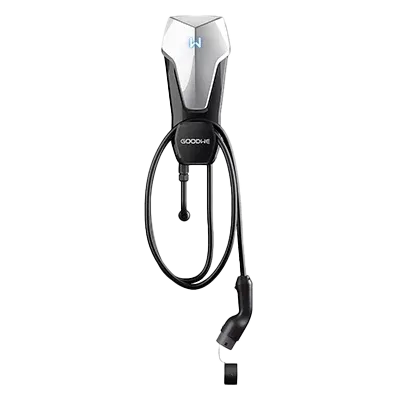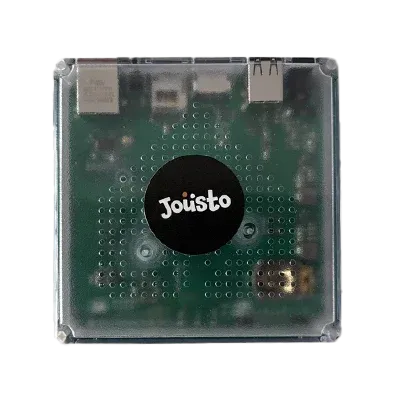
GoodWe EV Charger 7kW
Single-phase AC charger (IP66), perfect for most Aussie homes. Pair with Energy Hub for solar-aware charging.
Choose a charger, add the Jousto Energy Hub to charge from sunshine and cheap off-peak power, then book installation. Simple, smart, and ready for every EV.

Quality hardware, great value — and smarter with the Jousto Energy Hub.

Single-phase AC charger (IP66), perfect for most Aussie homes. Pair with Energy Hub for solar-aware charging.

Faster AC charging for three-phase homes and EVs that support higher rates. Solar-smart with Energy Hub.

Make charging solar-aware on day one. Includes Genius Agent to guide your self-setup & automations.
Learn more about the Jousto Home Assistant Genius.
Choose your charger
Pick 7kW or 22kW GoodWe model.
Add the Energy Hub
$249 with Genius Agent for self-setup.
Checkout online
We’ll confirm details and schedule install.
Charge on sunshine
Smart modes for solar and off-peak.

Small businesses in Australia are grappling with rising electricity prices, and a surprising number are overpaying for power unnecessarily. Much of this stems from staying on default electricity contracts known as Standing Offers, misunderstanding complex tariff structures, and not utilising energy-saving strategies or technology. Fortunately, these challenges are solvable.
By taking charge—through regular comparison of energy plans, conducting energy audits, investing in energy-efficient upgrades, and exploring innovative tools like Jousto—businesses can reduce their electricity bills and boost their bottom line. This blog dives into the core reasons for overpayment and outlines practical, actionable solutions tailored to the unique needs of Australian small businesses.
The rising cost of living in Australia isn’t just affecting households—small businesses are equally burdened. Electricity costs have become a critical operational expense, eating into profit margins and challenging long-term viability.
In many industries, electricity expenses now outweigh fuel and stock costs, making power prices a top priority. What’s more troubling is that many business owners are unaware they’re overpaying by hundreds or even thousands of dollars a year due to avoidable factors. This blog will uncover those causes and present a clear roadmap to reverse the trend.
One of the biggest contributors to inflated energy bills is the Standing Offer—a default plan assigned when businesses fail to negotiate or renew their energy contracts. These rates are typically higher than Market Offers, yet over 147,000 small businesses remain on them.
Regulated prices such as the Default Market Offer (DMO) and Victorian Default Offer (VDO) serve as price ceilings but often don’t represent the best deal available. Many businesses get stuck on these plans after:
Moving premises
Letting an old contract expire
Never comparing options to begin with
This complacency leads to overspending, as retailers rarely offer their best deals to passive customers.
Electricity billing is notoriously confusing. Between flat rates, time-of-use tariffs, and demand charges, it’s difficult for business owners to know what they’re really paying for. Of particular concern are demand charges—fees based on your peak energy usage in a billing cycle, not your overall consumption.
This means a short period of high usage can trigger hefty fees, even if your overall energy use is modest. Many businesses don’t even realise they’re on a tariff with demand charges or how they can be avoided.
Australia’s energy market is subject to global fuel prices, domestic supply issues, and regulatory changes. The cost of updating poles, wires, and integrating renewables into the grid is frequently passed on to consumers, causing unpredictable bill increases.
Though regulators cap prices with the DMO and VDO, these are not guaranteed to be affordable—only a reference point, not a bargain.
Another trap is the so-called "loyalty penalty", where customers who stay with the same provider often pay more than new customers. Discounts and incentives are routinely reserved for new sign-ups, leaving long-term clients with outdated and expensive plans.
Other contributing variables include:
Business size – larger operations naturally consume more
Location – different regions have different network tariffs
Hours of operation – businesses that run during peak times face higher charges
Understanding these unique conditions is essential for tailoring the right cost-saving strategy.
The most straightforward cost-saving step? Stop accepting the default. Use government comparison websites like:
Victorian Energy Compare
These platforms allow you to compare plans based on your actual usage. The average small business can save up to $1,160 per year by switching to a better Market Offer.
Tip: Set a calendar reminder to compare plans once a year.
An energy audit helps identify inefficiencies in your business. Auditors will:
Analyse past bills
Examine lighting, HVAC systems, and appliances
Recommend changes based on your operations
Government grants and rebates are often available to subsidise audit costs. The long-term savings can be substantial, especially when inefficiencies go unnoticed for years.
Some of the highest ROI upgrades include:
LED lighting (up to 75% more efficient)
High-efficiency HVAC systems
Energy-rated refrigerators and appliances
Smart thermostats and timers
Insulation and draught sealing
Many of these qualify for tax deductions under the Small Business Energy Incentive, making the upfront investment more affordable.
Australia’s solar conditions are ideal, and the cost of solar panels has dropped significantly. For small businesses:
Rooftop solar can slash daytime electricity usage
Battery storage allows usage of solar energy at night or during peak times
Feed-in tariffs may provide additional income
Federal and state governments regularly offer solar rebates and incentives, making this option increasingly attractive.
Understand your usage patterns. If your peak usage is predictable, consider:
Time-of-use tariffs if you can shift work to off-peak hours
Load shifting to reduce demand charges (e.g., staggering equipment start times)
Staff education to reduce energy waste
Even small behaviour changes can reduce demand charges, often the most punishing part of your bill.
Stay informed about:
The Small Business Energy Incentive (bonus tax deductions)
State-based rebate schemes
Energy audit subsidies
These schemes can cover a significant portion of your upgrade or audit costs. Check your local government’s website or contact an energy broker for up-to-date information.
Energy brokers can:
Compare dozens of retailers on your behalf
Negotiate custom pricing
Help switch providers with minimal hassle
They understand tariff structures and market trends, saving you time and ensuring you’re not missing better deals.
Small changes can add up:
Turn off appliances when not in use
Use energy-saving modes on electronics
Adjust thermostats by 1–2 degrees
Maintain equipment to ensure efficiency
Maximise use of natural light
These practices require no capital investment but can cut electricity usage by 5–15%.
If your business is committed to sustainability, GreenPower allows you to:
Purchase energy from 100% renewable sources
Reduce carbon footprint
Appeal to environmentally conscious customers
Though slightly more expensive, the brand credibility and customer trust it builds can be worth the investment.
Jousto is a smart energy management platform designed for small businesses. It offers:
Real-time tracking of energy usage at appliance-level
Automation to optimise usage around wholesale energy pricing
Peak usage insights to help manage demand charges
Solar optimisation tools for businesses with rooftop systems
For businesses in short-term rentals (Airbnb, etc.), Jousto can automate control of appliances across multiple tenants and ensure energy use is tracked and minimised.

By automating the optimisation of energy usage and offering deep insights, Jousto acts as a digital energy manager, helping businesses save money without extra staff or time.

Electricity costs no longer need to be a fixed burden for Australian small businesses. With the right strategies in place—regular plan comparisons, strategic investments, behavioural changes, and smart technology like Jousto—it’s possible to dramatically reduce power bills.
What’s critical is taking that first proactive step. Review your current energy plan today, and start exploring the many opportunities available. The savings aren’t just financial—they’re a competitive advantage that can set your business apart in a tough economic landscape.
If you’re ready to stop overpaying and start optimising your energy use, Jousto offers the tools and services to make it happen. Whether you want to manage your energy actively or leave it to the experts, there’s a solution tailored to your business needs.
Based in South Australia? Discover how Jousto helps businesses in your area cut power bills and maximise efficiency with localised support.
👉 Explore commercial energy services in Adelaide
Prefer a hands-off approach? Jousto’s “Do It For Me” service automates everything—tracking usage, adjusting appliance schedules, and slashing unnecessary costs.
👉 Let Jousto manage your energy for you
Want to dive deeper into what Jousto can do? From real-time energy tracking to solar optimisation and demand charge management, Jousto makes energy smarter and more affordable.
👉 See how Jousto can help your business
Don’t let high electricity bills hold your business back. Take control today—with Jousto.

© Copyright 2025.Honen Lead Generation.
All Rights Reserved.
Phone: 0489 261 333
185 Morphett St, Adelaide, SA, 5000